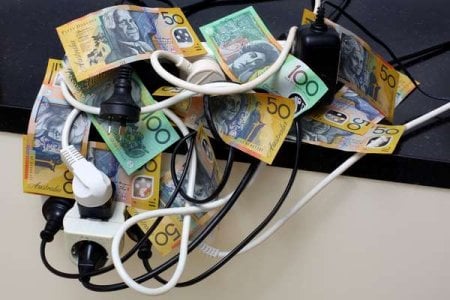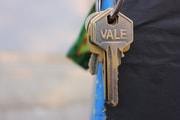Aussies in shock: How a 'common problem' skyrocketed bills from $365 to $1,500 – Fight back against overcharging now!
- Replies 5
In the land down under, where the sun scorches and the cost of living climbs, Australians are facing a new heatwave – skyrocketing energy and gas bills due to estimated meter readings. It's a 'common problem' that's leaving many Aussies with their wallets considerably lighter, and it's time to fight back.
Imagine opening your energy bill and finding the amount due has quadrupled. That's what happened to Victorian resident Celia Gercovich, who was stunned to see her gas bill jump from a reasonable $365 to a jaw-dropping $1,500. This isn't just an isolated incident; it's a widespread issue that's affecting unsuspecting customers across the country.
The root of the problem lies in the way some energy providers calculate your bill. Instead of performing a proper meter reading, they often use an estimate, which can lead to significant overcharging. This practice has left many Australians, like Celia, in disbelief as they grapple with the unexpected financial burden.

Celia's story is a cautionary tale for all of us. After moving into her new property, she received her first gas bill and was shocked by the final amount. 'We've previously been living in units, so we sort of expected things to be a little bit more expensive,' she said. 'But when that bill came through for 600 and something dollars, I thought, 'Something's not right'.'
Taking matters into her own hands, Celia contacted her provider, Energy Australia, and discovered her bill was based on an estimated meter reading. She was advised to send through a picture of her actual meter, and within minutes, her bill was halved to $308. 'I've always been someone who if something doesn't seem right, to ring and check,' Celia told Yahoo Finance. 'But I think, when you can have your bill halved, it's very important to make the call and query things.'
Celia isn't alone in her experience. Jayde, another Aussie, faced a similar issue when her gas bill surged by hundreds of dollars. After sending a photo of her meter to her provider, she saw a reduction of $400 on her bill. Other Australians have shared their stories of challenging estimated readings and achieving significant savings. One person's electricity bill was reduced from $1,500 to $365 after submitting a photo of their meter, while another saw their bill drop from $700-800 to just $45.
So, why do companies rely on estimate readings? Access issues are often cited as the reason. Energy Australia explains that a meter may not always be readable at the time of inspection. However, they assure customers that bills based on estimates are labeled as such and that a proper reading should be performed at the next inspection. If an overcharge occurs, a credit is typically applied to the next bill.
Celia suspects her meter wasn't read due to her dogs on the property, which might have deterred the worker. While she understands that estimates are usually corrected later, she emphasizes the stress that sudden price hikes can cause, especially with the current cost of living pressures.
What should you do if you receive an estimated bill? Money expert Joel Gibson advises being proactive. Don't wait for the bill to be corrected; if it's substantially higher or lower than usual, ring your provider. Joel has a smart meter at home, which sends readings to his energy company every 15 minutes. While this seems like a solution, it's not without its pitfalls, as some people are being moved to Time Of Use tariffs without realizing, leading to higher bills if they consume energy during peak times.
Both Gibson and Gercovich believe energy companies should have systems in place to flag estimate bills that are much higher than usual, so the onus isn't always on the customer to dispute it.
Members of the Seniors Discount Club, it's time to take control of your energy bills. If you suspect you've been overcharged, follow these steps:
1. Check your bill for the word 'estimate' or 'E' next to the reading.
2. Compare the estimated reading with your actual meter reading.
3. If there's a discrepancy, take a photo of your meter and send it to your provider.
4. Request an adjusted bill based on your actual usage.
5. Consider setting up alerts for when your meter is due to be read, so you can ensure access is clear for the meter reader.
 By being vigilant and proactive, you can protect yourself from unexpected bill shocks and keep your hard-earned money where it belongs – in your pocket. Have you had a similar experience with estimated bills? Share your story in the comments below and let's help each other stay informed and empowered!
By being vigilant and proactive, you can protect yourself from unexpected bill shocks and keep your hard-earned money where it belongs – in your pocket. Have you had a similar experience with estimated bills? Share your story in the comments below and let's help each other stay informed and empowered!
Imagine opening your energy bill and finding the amount due has quadrupled. That's what happened to Victorian resident Celia Gercovich, who was stunned to see her gas bill jump from a reasonable $365 to a jaw-dropping $1,500. This isn't just an isolated incident; it's a widespread issue that's affecting unsuspecting customers across the country.
The root of the problem lies in the way some energy providers calculate your bill. Instead of performing a proper meter reading, they often use an estimate, which can lead to significant overcharging. This practice has left many Australians, like Celia, in disbelief as they grapple with the unexpected financial burden.

Australians should closely review their energy and gas bills, as many are being overcharged due to estimated readings rather than actual meter readings. Credit: Shutterstock
Celia's story is a cautionary tale for all of us. After moving into her new property, she received her first gas bill and was shocked by the final amount. 'We've previously been living in units, so we sort of expected things to be a little bit more expensive,' she said. 'But when that bill came through for 600 and something dollars, I thought, 'Something's not right'.'
Taking matters into her own hands, Celia contacted her provider, Energy Australia, and discovered her bill was based on an estimated meter reading. She was advised to send through a picture of her actual meter, and within minutes, her bill was halved to $308. 'I've always been someone who if something doesn't seem right, to ring and check,' Celia told Yahoo Finance. 'But I think, when you can have your bill halved, it's very important to make the call and query things.'
Celia isn't alone in her experience. Jayde, another Aussie, faced a similar issue when her gas bill surged by hundreds of dollars. After sending a photo of her meter to her provider, she saw a reduction of $400 on her bill. Other Australians have shared their stories of challenging estimated readings and achieving significant savings. One person's electricity bill was reduced from $1,500 to $365 after submitting a photo of their meter, while another saw their bill drop from $700-800 to just $45.
So, why do companies rely on estimate readings? Access issues are often cited as the reason. Energy Australia explains that a meter may not always be readable at the time of inspection. However, they assure customers that bills based on estimates are labeled as such and that a proper reading should be performed at the next inspection. If an overcharge occurs, a credit is typically applied to the next bill.
Celia suspects her meter wasn't read due to her dogs on the property, which might have deterred the worker. While she understands that estimates are usually corrected later, she emphasizes the stress that sudden price hikes can cause, especially with the current cost of living pressures.
What should you do if you receive an estimated bill? Money expert Joel Gibson advises being proactive. Don't wait for the bill to be corrected; if it's substantially higher or lower than usual, ring your provider. Joel has a smart meter at home, which sends readings to his energy company every 15 minutes. While this seems like a solution, it's not without its pitfalls, as some people are being moved to Time Of Use tariffs without realizing, leading to higher bills if they consume energy during peak times.
Both Gibson and Gercovich believe energy companies should have systems in place to flag estimate bills that are much higher than usual, so the onus isn't always on the customer to dispute it.
Members of the Seniors Discount Club, it's time to take control of your energy bills. If you suspect you've been overcharged, follow these steps:
1. Check your bill for the word 'estimate' or 'E' next to the reading.
2. Compare the estimated reading with your actual meter reading.
3. If there's a discrepancy, take a photo of your meter and send it to your provider.
4. Request an adjusted bill based on your actual usage.
5. Consider setting up alerts for when your meter is due to be read, so you can ensure access is clear for the meter reader.
Key Takeaways
- Australians are encouraged to check their energy and gas bills closely as many are being overcharged due to estimated readings instead of actual meter readings.
- Victorian resident Celia Gercovich successfully halved her gas bill from $617 to $308 after presenting her actual meter reading to her provider, Energy Australia.
- Customers have shared experiences of significant reductions in their energy bills upon challenging the estimated readings with some bills dropping from hundreds of dollars to as low as $45 after actual meter readings were submitted.
- Money expert Joel Gibson advises being proactive about estimate bills and notes that while smart meters relay readings more frequently, they may lead to higher bills if customers are unaware of Time Of Use tariffs.







